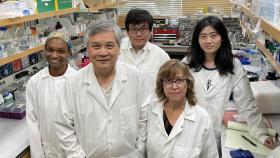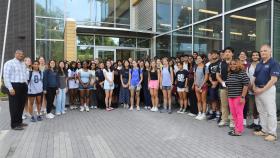By Quinn Eastman, Emory University
The biological differences between male and female cells may influence their uptake of nanoparticles, which have been much discussed as specific delivery vehicles for medicines.
Vahid Serpooshan, a new faculty member of the Wallace H. Coulter Department of Biomedical Engineering at the Georgia Institute of Technology and Emory University, has a recent paper published in ACS Nano making this point. He and his colleagues from Brigham and Women’s Hospital and Stanford/McGill/UC Berkeley tested amniotic stem cells, derived from placental tissue. They found that female amniotic cells had significantly higher uptake of nanoparticles (quantum dots) than male cells. The effect of cell sex on nanoparticle uptake was reversed in fibroblasts. The researchers also found out that female versus male amniotic stem cells exhibited different responses to reprogramming into induced pluripotent stem cells (iPSCs).
“We believe this is a substantial discovery and a game changer in the field of nanomedicine, in taking safer and more effective and accurate steps towards successful clinical applications,” says Serpooshan, who is also part of the Department of Pediatrics at Emory.
Serpooshan’s interests lie in the realm of pediatric cardiology. His K99 grant indicates that he is planning to develop techniques for recruiting and activating cardiomyoblasts, via “a bioengineered cardiac patch delivery of small molecules.”
Based at Emory, he joins labs with overlapping interests, such as Nawazish Naqvi’s, as well as Mike Davis and Hee Cheol Cho, who are both researchers with the Petit Institute for Bioengineering and Bioscience in addition to being Coulter Department faculty members.
Media Contact
Jerry Grillo
Communications Officer II
Parker H. Petit Institute for
Bioengineering and Bioscience
Keywords
Latest BME News
Coskun pioneering new research area and building a company around iseqPLA technology
BME researcher Ankur Singh using new technology to uncover weakened response in cancer patients
Research team led by BME's Cheng Zhu probes the underlying mechanisms of PD-1 checkpoint inhibitor therapy
Georgia Tech grad reflects on his rookie season as a biomechanics engineer with the New York Mets
First-year students learned about the resources and support they could access during their college journey in BME.
BME assistant professor using Sloan Scholars Mentoring Network seed grant to support her lab's work
Coulter Department honors Jaydev Desai, Melissa Kemp, Gabe Kwong, and Johnna Temenoff








